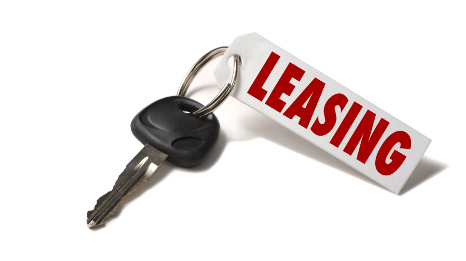Swapalease.com reported lease credit approvals during the month of July climbed to the highest monthly level of the year, reversing a trend that saw continuous decline since January largely due to an increase in the number of subprime credit applicants.
The company pinpointed the July approval reading at 81.0 percent.
Despite the high marks in July, Swapalease attributed the growing number of credit declines so far this year to a rising number of vehicle-lease shoppers with subprime credit profiles seeking to enter the leasing market. Different than financing, the company acknowledged most subprime candidates will not qualify for a lease, nor lease takeover, from the bank overseeing the vehicle’s payment schedule.
Even with July’s high numbers, analysts indicated, the year-to-date approvals rate has fallen to 66.5 percent of all lease applicants, compared with a year-to-date rate of 75.6 percent in July of 2013.
Swapalease works to help subprime shoppers elevate their credit profile through a program sponsored by ConsumerDirect.com. Once these shoppers revitalize their credit they can re-enter the Swapalease.com marketplace and reapply for a lease assumption.
“Credit has always been the lifeblood of every lease program, and all lease companies in the Swapalease.com marketplace adhere to their own guidelines,” said Scot Hall, executive vice president of Swapalease.com.
“We will be taking a closer look at the number of subprime candidates that continue to shop in our marketplace, and will look to identify additional programs to help them become qualified lease candidates,” Hall continued.
Near-term predictions made this week by Moody's Investors Service fall in line with ongoing lending cycle points noticed by veteran finance company executives such as Credit Acceptance’s Brett Roberts and Brad Bradley of Consumer Portfolio Services.
Moody’s analysts indicated in a new report that they do not expect losses of U.S. subprime auto loans to reach crisis levels. The firm acknowledged delinquencies have risen over the last few years, but they remain below the levels at the height of the financial crisis and have started to moderate.
Moody's senior vice president Mack Caldwell elaborated about that stance in the report, titled, “U.S. Subprime Auto Loan Delinquencies, Still Below Post-Crisis Highs, Reflect Typical Credit Expansion.”
Caldwell said, “Subprime auto lenders have already started to rein in lending to weaker credit-quality borrowers. Barring an imprudent expansion in lending to subprime borrowers, delinquencies will not increase to crisis levels.”
During their most recent quarterly conference calls, both Roberts and Bradley talked about the industry cycles both have seen in the subprime financing space. The finance company leaders each told Wall Street observers that their underwriting practices haven’t loosened in an attempt to chase volume — practices sometimes leveraged by other well-established institutions as well as start-up operations.
Bradley explained this is the third cycle of ups and downs in the subprime space since he’s been associated with CPS. Bradley also referenced what he called the second cycle — the span going into the last recession that he believes was “dominated by large banks.”
The CPS chairman, president and chief executive officer said, “Those large banks were able to compete very aggressively on price, caused a lot of independent players to really work hard and cut price and maybe buy more aggressively. All of those companies did just fine. We all went through it. I don't think anyone really particularly went out of business for credit reasons. A couple of people went out of business because they ran out of funding. That's a very distinct difference.”
Bradley went on to mention how much better finance company leadership is now as compared to lending cycles past.
“Almost all of the companies today are being run by people who have been in the industry for 25 years, as opposed to the first cycle where a bunch of the companies were run by people who had been in the industry for 5 minutes,” Bradley said.
“And so as much as you will have a few companies that don't do it particularly right, and a few of them fall on their face for a variety of different reasons, by and large the industry as a whole should do just fine,” he continued. “It’s run by better people. You’re going to have a few fall out, much like in the first cycle. But in terms of seeing this industry fall apart in any grand scale, it’s sort of hard to figure out why people would think that. It's run by more seasoned executives. There is no pricing pressure from banks.
“And in fact, we are sitting in one of the most favorable environments we possibly could be in,” Bradley went on to say.
In this week’s report, Moody’s emphasized the increase in financing to subprime customers marks the return to a typical consumer lending cycle. In recent months, Moody's contends that banks and other non-traditional finance companies have started to pull back from lending to subprime borrowers, which has eased pressure on the smaller finance companies that traditionally finance subprime auto loans.
With less competitive pressure, Caldwell insisted finance companies can target higher-credit-quality borrowers.
“Lenders have become more cautious, as evidenced by the rising credit scores of borrowers buying used vehicles," Caldwell said. “Subprime interest rates are also rising, a sign that lenders have a lower risk appetite.”
That slackening appetite is part of the typical cycle Roberts stressed to the investment community that he’s seen, as well. The Credit Acceptance CEO was asked to elaborate how contracts the competition might be adding to its portfolio might be influencing his company’s bottom line.
“The returns that we try to make, our target returns are quite a bit higher than the target returns of a lot of the companies we compete with,” Roberts said. “If everything goes according to plan, the profit per deal that we shoot to achieve is typically quite a bit higher in terms of returns. You can look at the other public companies that are out there that are auto finance companies, and compute their returns, and you can corroborate what I'm saying.
“But then usually there's a part of the cycle where things don't go according to plan,” he continued. “And because we have a nice margin of safety built into our business model, we typically do OK during those periods. There are other companies that operate with razor thin margins that don't do as well. We would expect it to play out the same way this time.”
Moody’s pointed out that delinquencies have risen with each full origination year since 2010. Analysts insisted the economic recovery and pent-up demand for vehicles spurred lenders to increase their loan volumes by extending credit to weaker borrowers.
Moody's vice president and senior analyst Peter McNally, a co-author of the report, also mentioned competition among finance companies increased to accommodate the pent-up demand, causing institutions to loosen underwriting standards.
“The potential for profits from subprime lending attracted banks, credit unions and captive finance companies, which typically do not focus heavily on subprime borrowers,” McNally said. “The average credit score on both used- and new-vehicle loans had declined and loan terms had lengthened, increasing the period in which a borrower could default.”
Moody's closed its report by noting analysts continue to be concerned over the long term about the operational risk in asset-backed securitizations backed by subprime auto loans from smaller lenders, which the firm’s ratings reflect.
“Increasing origination levels for small, niche players strain their ability to manage loan and transaction cash flows if they do not also increase servicing capacity, which can ultimately lead to higher losses,” McNally said.
“Higher loan losses can cause a financially strapped lender to lose investor confidence and funding, increasing the securitization’s losses if the servicer fails and a servicing transfer disrupts collections and loss remediation efforts,” he added.
Nicholas Financial originated more subprime contracts during the first quarter of its fiscal year, but its net earnings softened by double digits.
The number of contracts the company booked during the quarter came in at 4,244 for a total loan amount worth $46,769,602. The average loan in Q1 stood at $11,020 with terms stretching to 54 months and a weighted APR at 23.01 percent and an average discount of 8.19 percent.
In the year-ago quarter, Nicholas Financial originated 3,960 loans worth $41,882,714. The average contract was $10,576 while the weighted APR (22.81 percent) and average term (51 months) were both lower, too. But the average discount was slightly higher at 8.35 percent.
The Q1 performance left Nicholas Financial with a net earnings decrease of 14 percent to settle at $4.909 million as compared to $5.7 million for the three months of its previous fiscal year.
The company’s per-share diluted net earnings dropped 13 percent to $0.40 as compared to $0.46 in the previous year’s first quarter.
However, Nicholas Financial posted a 4-percent uptick in revenue in the first quarter, as it climbed to $21.333 million, up from $20.476 million a year earlier.
Nicholas Financial president and chief executive officer Ralph Finkenbrink explained the company’s Q1 results were negatively affected by a reduction in the gross portfolio yield, an increase in the provision for credit losses and an increase in operating expenses compared to year-ago quarter.
Finkenbrink also noted results were further impacted negatively by a change in the fair value of interest rate swap agreements, which resulted in a loss of $212,000 in the most recent quarter compared to a gain of $833,000 a year earlier.
Furthermore, the company boss pointed out professional fees associated with the previously announced potential sale of the company, that were not deductible for income tax purposes, will now be deductible as a result of the termination of the arrangement agreement as announced on July 1. That move resulted in a decrease in income tax expense of $804,000.
Finkenbrink highlighted Nicholas Financial remains in a growth mode as it already operates 66 branch locations throughout the Southeast and Midwest.
“We will continue to develop additional markets and we may open additional branch locations during the remainder of our current fiscal year, which ends March 31,” Finkenbrink said.
Cloud-based loan origination system defi SOLUTIONS integrated Carleton SmartCalcs into its platform this week.
Officials highlighted defi SOLUTIONS customers now can access Carleton’s 40 years of compliance expertise to assure federal and state lending interest, fees and the annual percentage rate maximums are not exceeded.
From within the defi SOLUTIONS system, SmartCalcs automatically can validate the loan disclosure items against state usury laws and federal Truth in Lending, assuring clients compliance.
Carleton also intends to keep defi SOLUTIONS clients up to date with all regulatory compliance requirements on an ongoing basis.
Carleton president and chief executive officer Pat Ruszkowski said, “defi SOLUTIONS shares our same objective of providing customers with a comprehensive set of validation tools that allow them to focus on their business and customer relationships instead of managing the complex federal and state compliance requirements."
With defi SOLUTIONS, clients have the ability to coordinate the lending process from end-to-end (the online application to decision to verification and then to underwriting). defi’s SOLUTIONS program can increase efficiency by minimizing manual processes.
Stephanie Alsbrooks, chief executive officer of defi SOLUTIONS, insisted the provider created an LOS that can meet the complex requirements of large institutions but is also quick to deploy, scalable and affordable for the general auto financing industry.
“Integration with Carleton will give defi clients the ability to more easily comply with federal and state lending regulations from within their LOS,” Alsbrooks said.
“Our clients will also be able to validate against in-house defined underwriting lending requirements which further extends our goal of offering the most flexible and configurable LOS on the market,” she continued.
The integration with Carleton SmartCalcs comes on the heels of defi SOLUTIONS signing First Access Funding Corp. to its client roster.
First Access Funding is privately held non-prime auto finance company based in Edmonton, Alberta. President and CEO David Ballantine initially met Alsbrooks at the National Automotive Finance Association Non-Prime Auto Financing Conference a year ago.
“We weren’t looking for a new LOS vendor at the time, but Stephanie’s overall industry knowledge and ability to express an action plan with confidence was key,” Ballantine said.
Ballantine said the defi SOLUTIONS LOS is already making a significant impact on First Access business processes.
“Our systems now communicate front to back, eliminating hours of manual re-entry by our accounting staff. In addition, the streamlined nature of the LOS saves our credit analysts a lot of time and it helps reduce errors so we win more deals with speed and accuracy,” he said.
Ballantine added, “defi SOLUTIONS came in and delivered on time and on budget and was responsive to our questions and requests. They remain accountable, accessible, and reliable, and it has made all the difference for our business.”
GrooveCar Direct, an online auto buying resource for credit unions, recently reached partnership with two more institutions.
The two credit unions now a part of the network are as follows:
— Greater Alliance Federal Credit Union of Paramus, N.J., which has a membership of 18,525 with assets exceeding $163 million.
— Dutch Point Credit Union of Wethersfield, Conn., which serves a membership of 21,178 with assets exceeding $239 million.
Greater Alliance vice president-lending Johana Gomera said, “Greater Alliance has experienced rapid membership growth and by adding the GrooveCar program, we are able to deliver more value to our members while serving our mission to deliver high quality financial services and an efficient delivery system.
“GrooveCar’s inventory coupled with our branding and auto product offerings serve our members' best interests while growing our loan portfolio from within,” Gomera added.
GrooveCar vice president of strategic alliances Robert O’Hara explained GrooveCar Direct was created expressly to enable credit unions to develop a revenue generating stream and enhance their ability to secure auto loans. The custom program can assist credit unions in realizing quality auto loans through direct and indirect avenues while strengthening member relationships and boosting financial stability.
“Our product is unique in that it focuses upon growth from within the credit union’s membership,” O’Hara said. “The credit union is able to serve the best interest of its members, while accomplishing a number of goals, notably capturing incremental loan volume, improving their products-per-member ratio, strengthening their ROI while earning additional non-interest income and much more.”
Moody’s Analytics senior director Cristian deRitis chimed in this week, refuting the notion that rising auto lending volume is creating a bubble similar to the one that burst in the mortgage space and sent the U.S. economy into recession.
deRitis insisted that credit quality is better today than prior to the recession, or at any time since the American Bankers Association began tracking delinquency rates for auto loans in 1980.
“Borrowers of all credit profiles are taking out larger loans than they did in 2009,” deRitis wrote in a blog post on Moody’s website. “Improved consumer balance sheets and confidence offer one possible explanation. Consumers owe less now than they did during the recession, so they can afford to take on more debt. Another reason is supply: More lenders are more willing to provide credit than they were in 2009.”
The total amount outstanding in finance companies’ auto portfolios climbed above $900 billion earlier this year, according to Equifax. deRitis cited many other Equifax figures in his analysis, touching on the rise of contracts to subprime borrowers and acknowledging how that typically generates industry apprehension.
“The critics’ concerns notwithstanding, it is difficult to view the increased availability of credit as a negative,” deRitis said. “The steady availability of credit is a major reason for the auto industry’s growth over the past few years, while other sectors such as housing and retail sales have struggled.
“Nonetheless, if the Great Recession taught us anything, it is the danger of complacency,” he continued. “Just because consumers can afford to take on more debt does not mean they should. Today's record low delinquency rates can quickly accelerate.”
But again referencing Equifax data, deRitis pointed out payment performance has improved with each passing month since delinquency rates peaked in 2009.
“The fact that this is true across all stages of delinquency (30, 60, 90 and 120 days past due) is particularly encouraging,” he said.
The Moody’s analysts emphasized that instances of fraud and questionable financing practices that’s been highlighted in media reports this summer need to be addressed before they become systemic issues.
“Yet in some respects, auto lending is a victim of its own success,” deRitis said. “While auto credit contracted during the Great Recession, it was the first consumer credit sector to fully recover.
“Unlike private label mortgage-backed securities, the market for securities backed by auto loans did not collapse, continuing to function throughout the recession,” he continued. “Although significant, the losses suffered by auto finance companies and banks were tolerable and did not alter the shape of the financial system.”
deRitis reiterated the point made by dealers and finance companies to regulators — that access to reliable transportation is critical to securing and retaining employment to generate steady income.
“For some, the ability to purchase a vehicle meant the difference between keeping a job and unemployment,” deRitis said. “Tightening compliance and increased education are important to insure that borrowers are qualified and understand their loans, as is punishing unscrupulous dealers and lenders.
“But restricting credit too severely has its own consequences and will ultimately push consumers into the shadow banking system with little if any regulatory protection,” he continued.
“Without financing to support sales, the industry's recovery would have been far slower with more severe job losses,” deRitis went on to say. “The market may have overshot in the opposite direction recently, providing too liberally. But to borrow an automotive metaphor, it is easier to tap the brakes and correct imbalances than to try and move the industry out of a ditch with the parking brake of credit fully engaged.”
Intersection Technologies’ F&I Express recently added American Guardian Warranty Services (AGWS) to its aftermarket e-contracting platform.
Executives highlighted the enhanced F&I Express functionality is free to all AGWS agents and dealers.
AGWS is a provider of administration services for dealers and marketers offering vehicle service agreements, limited warranties and a variety of environmental and aftermarket products across the United States.
Formed in 1998, American Guardian Warranty Services Inc. was started by executives with more than 60 years of combined experience in the extended service contract industry.
Intersection Technologies president and chief executive officer Brian Reed insisted American Guardian Warranty Services lays the groundwork for the innovative, creative and fresh approach to the business now that its full suite of aftermarket F&I products is available on the F&I Express platform.
“With over 16 years in the business, American Guardian has been leading the industry with their innovative ideas and approach,” Reed said. “They will be a welcomed asset giving dealers more choices to e-Contract their aftermarket F&I products.”
To activate the service, call F&I Express at (855) 364.3977 or email information@fandiexpress.com. If you are interested in contacting AGWS regarding products or services, call (800) 579-2233, ext. 4196.
Credit Acceptance Corp. recently reported more than just its second-quarter performance. The company also received a civil investigative demand from the Federal Trade Commission.
As a part of its Q2 financial reporting to the Securities and Exchange Commission, Credit Acceptance said in its filing that the CID came from the FTC on June 6 relating to its various practices regarding consumers.
Credit Acceptance senior vice president and treasurer Doug Busk told investment analysts during a conference call that the company is cooperating with the inquiry.
“Relative to the contents of the civil investigative demand, it requested information on a number of topics: credit reporting, consumer privacy and information security, customer payments, marketing, training, customer communications, and consumer complaints,” Busk said.
“In terms of timing, really we don't have any insight there. We provide information, and the next step and the timing of the next step isn't known,” he continued.
The FTC’s request arrived as Credit Acceptance was in the closing weeks of a quarter when both its consolidated net income and adjusted net income increased year-over-year.
The company’s Q2 consolidated net income rose to $69.4 million, or $3.06 per diluted share compared to $61.5 million, or $2.56 per diluted share, in the year-ago quarter.
For the six-month span that ended June 30, Credit Acceptance generated $119.2 million, or $5.15 per diluted share, in consolidated net income, a total slightly lower than the same time frame in 2013 when the amount was $122.1 million, or $5.04 per diluted share.
Credit Acceptance’s second-quarter adjusted net income came in at $67.6 million, or $2.98 per diluted share, compared to $60.7 million, or $2.53 per diluted share, for the same period last year.
Through half of 2014, the company posted $131.0 million in adjusted net income, or $5.66 per diluted share. That’s higher than a year ago when Credit Acceptance had adjusted net income of $119.5 million, or $4.93 per diluted share.
Q2 Originations and Competition
Credit Acceptance’s string of double-digit growth year-over-year in loan unit volume and dollar volume stopped in the second quarter after reaching three quarters in a row. The company still posted unit- and dollar-volume jumps of 4.5 percent and 5.7 percent, respectively, during Q2 as its number of active dealers grew 10.6 percent.
The company originated 50,913 contracts in Q2 from a dealer base that consisted of 4,960 stores.
Credit Acceptance chief executive officer Brett Roberts acknowledged average volume per active dealer declined 5.5 percent year-over-year in Q2. Roberts attributed the decline in volume per dealer as the result of increased competition.
”It continues to be a difficult competitive environment,” Roberts said. “The growth rate in the second quarter did break the trend that we saw over the last three quarters. I don't know if the comparison is a little bit tougher this quarter. Last year's first quarter was pretty soft, so the first quarter of this year's growth number likely reflected that. The comparison was a little bit tougher. But it continues to be a very tough market, and the 4.5 percent growth that we had this time was certainly a break in the trend line.”
Analysts asked Roberts if Credit Acceptance is poised to return to year-over-year loan unit increases ranging from 11.0 percent to 14.3 percent as well as dollar volume rises climbing between 11.3 percent and 16.2 percent — the upward levels the company posted in the previous three quarters.
“It will get better at some point but it goes in cycles,” Roberts said. “It's probably likely to get worse before it gets better. That has been the history. It is difficult to know the exact timing, but we're in a period now where there's lots of capital and there’s lots of competition, and there’s certainly loans that are being written that we wouldn't want to write based on the economics of those loans, and so we just have to be patient until the tides turn, which they eventually will.”
While advocacy groups and federal regulators continue to be skeptical of the convenience and value dealers present at the F&I office, new data from Edmunds.com is showing the volume of work completed in that store department is climbing to levels never previously seen.
Edmunds.com determined only about 23 percent of buyers in July completed a purchase either with cash or financing arranged on their own as opposed to the remaining 77 percent that included some kind of indirect financing orchestrated at the dealership.
Analysts indicated last month’s trend is on track to be the lowest level ever, and down from about 35 percent just five years ago.
"You can't underestimate how important dealer financing has been to this automotive recovery,” Edmunds.com senior analyst Jessica Caldwell said.
The latest auto loan figures back up Caldwell’s declaration. As previously reported here by SubPrime Auto Finance News, Equifax computed that the total outstanding auto loan balance as of June topped $900 billion for the first time.
“What’s great is we continue to see the momentum. Each month, we continue to see it grow and get stronger. It’s a really positive sign for the car market in general. Growing balances will continue to feed healthy growth for the next three to five years,” said Jennifer Reid, the senior director of product marketing at Equifax Automotive Services.
That growth expectation now and down the line isn’t just coming from prime borrowers, either. CNW Research pointed out that the number of subprime buyers in July rose by a “substantial” amount. CNW pinpointed the jump at 25.5 percent versus the same month a year ago.
And growth in deep subprime — borrowers with credit bureau scores below 550 — expanded by nearly the same rate in July, too. CNW indicated the amount of deep subprime borrowers climbed by 23.6 percent year-over-year.
Perhaps at least aiding in that growth — and aiding in profits for both the dealer and finance company — is the work being completed in the F&I office.
“When you think about more than three-quarters of people are at the dealership getting some sort of financial package, it just seems it’s totally changed from the mindset of a long time ago where you saved money and put down a big down payment,” Caldwell said.
“It seems like there are so many people who buy on monthly payment that the dealer works out for them, whether it’s a lease or financing,” she continued. “People just work within their budget saying, ‘OK, that monthly payment works for me.’ That’s why you see so much happen at the dealership rather people checking their own bank or credit union, thinking about how much they can afford before going into the dealership.
“I think (completing financing at the dealership) is a convenience factor, but I also think it’s also sometimes what drives the purchase decision. Some of these offers are so great whether it’s leasing or financing. It can really make or break the deal. Not only is it a matter of convenience, getting your transaction done all in one place, it’s also financially advantageous for people,” Caldwell went on to say.
A new kind of subprime borrower is starting to influence the statistics gathered by Equifax.
Jennifer Reid, the senior director of product marketing at Equifax Automotive Services, acknowledged that dealers and finance companies typically think of subprime consumers as ones with delinquencies, defaults and bankruptcies.
But Reid pointed to the slight uptick in subprime vehicle leasing in April that potentially was booked through special captive finance company programs geared to recent college graduates who might be carrying student loan debt and need the flexibility of a manageable monthly payment.
“When you start charting subprime, you normally just think of 640 and below,” Reid told SubPrime Auto Finance News during a recent phone interview. “But on the retail side, you’ve got to start to think about what’s making up those numbers. They’re not necessarily the subprime customers who have a lot of delinquencies or issues from the past. You’ve got a lot of special captives targeting that younger, first-time college graduates. It may be just someone with a thinner file or no credit. You’ve got a lot of college graduates with special programs out there.”
According to a recent study by the Federal Reserve Bank of Cleveland, analysts cited data from the Consumer Financial Protection Bureau, which estimated that student loans outstanding currently total about $1.2 trillion. That figure is spread among 40 million borrowers, or an average debt of nearly $30,000 per student.
Despite that large amount of debt that’s required to be repaid to federal outlets and cannot be discharged through bankruptcy, Ann Marie Wiersch pointed toward the positives of the situation. Wiersch is a senior policy analyst at the Federal Reserve Bank of Cleveland.
“The range of debt burden varies tremendously from student to student, though many of the graduates with the heaviest debt burden land high-income professional jobs — doctors or attorneys, for example — that put them in a strong position to repay the debt,” Wiersch wrote in a research study posted earlier this year.
“Experts believe that a majority of student loan defaults are concentrated among those who did not complete their education — their default rates are four times higher than those of graduates,” Wiersch continued. “This is not surprising, since many of these dropouts, unlike graduates, are no better able to repay than they were before enrolling.”
Even if these consumers complete their degree, the challenge of finding gainful employment is another element complicating the situation for these potential borrowers, according to Reid. She expects underwriting departments to see more applications arrive with student loan debt registering as a significant part of the background being brought into the situation.
“I think it’s a discussion you’re going to see more of, especially in the next couple of years, and the impact it’s going to have on that demographic getting vehicles,” Reid said. “When you’ve got high loan debt coupled with high unemployment, and they need a car, that equation doesn’t always work well together. That’s definitely going to be a discussion going forward especially with so many vehicles in the next 10 years expected to be sold in that segment.
“On the dealer side as well, they’re going to have to get more comfortable with working with that demographic of customers to have those conversations about having the right vehicle to meet the needs of that demographic,” she continued.
Topics that are going to influence the vehicle financing industry both long-term and in the immediate future such as student loan debt are going to be highlighted throughout the second annual SubPrime Forum, which is again a part of Used Car Week. The SubPrime Forum, orchestrated in conjunction with the National Automotive Finance Association, will have keynote presentations and panel discussions covering subjects such as originations, compliance and more.
“Dealers and lenders are educating themselves and getting more information,” said Reid, part of the Equifax team who will be joined by other SubPrime Forum speakers from firms such as Black Book Lender Solutions, Hudson Cook and Dealertrack Technologies.
“There’s a lot of questions being asked. There’s quite a bit of dialogue happening. As an entire industry, we’re all talking about the changing environment because it’s changing so rapidly,” Reid continued.
“I think it’s very promising to see everyone coming together to talk through some of the challenges that are already here or are on the horizon. They’re recognizing the momentum and trying to find ways to keep it,” she went on to say.
The SubPrime Forum is scheduled for Nov. 11 and 12 at the Red Rock Casino, Resort & Spa in Las Vegas.
For more details about the SubPrime Forum as well as the opportunity for registration discounts, go to subprime.autoremarketing.com.












